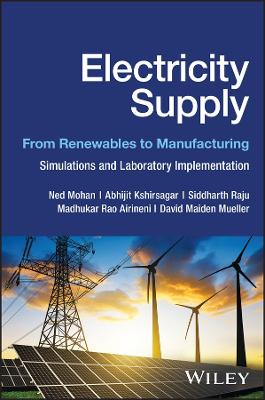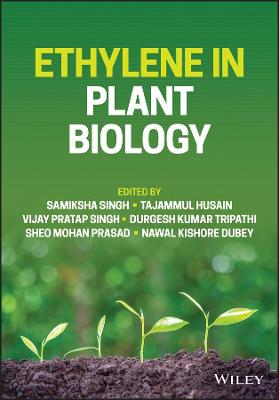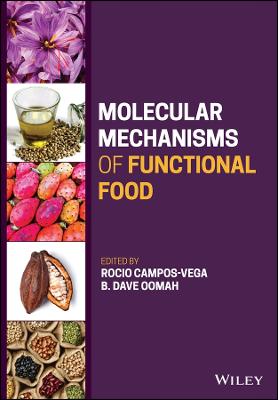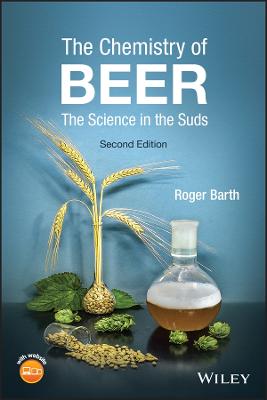Biochemistry for Sport and Exercise Metabolism
 -10%
portes grátis
-10%
portes grátis
Biochemistry for Sport and Exercise Metabolism
MacLaren, Donald; Morton, James
John Wiley & Sons Inc
09/2024
352
Mole
Inglês
9781119605041
15 a 20 dias
Descrição não disponível.
Preface xiii
1 Energy Sources for Muscular Activity 1
1.1 Adenosine Triphosphate: The Energy Currency 2
1.2 Energy Continuum 2
1.3 Energy Supply for Muscle Contraction 3
1.4 Energy Systems and Running Speed 6
1.5 Why Can't a Marathon be Sprinted? 7
1.6 Energy Sources and Muscle 8
1.7 Can Muscle Use Protein for Energy? 9
1.8 Key Points 10
References 11
2 Skeletal Muscle Structure and Function 13
2.1 Skeletal Muscle Structure 14
2.1.1 Gross Anatomical Structure 14
2.1.2 The Muscle Fibre 14
2.1.2.1 Sarcolemma 16
2.1.2.2 Sarcoplasm 17
2.1.2.3 Myofibrils 17
2.1.2.4 Sarcoplasmic Reticulum 19
2.1.2.5 Neuromuscular Junction 20
2.2 Muscle Contraction 21
2.2.1 Propagation of the Action Potential 22
2.2.2 Excitation-Contraction Coupling 24
2.2.3 The Sliding Filament Mechanism 24
2.3 Muscle Fibre Types 26
2.3.1 General Classification of Muscle Fibres 26
2.3.1.1 Slow Oxidative Fibres 26
2.3.1.2 Fast Oxidative Glycolytic Fibres 27
2.3.1.3 Fast Glycolytic Fibres 28
2.3.2 Muscle Fibre Distribution 28
2.3.3 Muscle Fibre Recruitment 29
2.4 Muscles in Action 30
2.4.1 Types of Muscle Contraction 30
2.4.2 The Twitch Contraction 30
2.4.3 The Length-Tension Relationship 31
2.4.4 Tetanus Contractions 31
2.4.5 Force-Velocity Relationship 32
2.4.6 Muscle Fatigue 33
2.5 Key Points 34
References 35
3 Biochemical Concepts 37
3.1 Organization of Matter 38
3.1.1 Matter and Elements 38
3.1.2 Atoms and Atomic Structure 38
3.1.3 Atomic Number and Mass Number 40
3.1.4 Atomic Mass 40
3.1.5 Ions, Molecules, Compounds and Macronutrients 41
3.2 Chemical Bonding 42
3.2.1 Ionic Bonds 42
3.2.2 Covalent Bonds 44
3.2.3 Molecular Formulae and Structures 44
3.2.4 Functional Groups 46
3.3 Chemical Reactions, ATP and Energy 46
3.3.1 Energy 47
3.3.2 ATP 48
3.3.3 Units of Energy 50
3.3.4 Types of Chemical Reactions 51
3.3.4.1 Synthesis Reactions 51
3.3.4.2 Decomposition Reactions 51
3.3.4.3 Reversible Reactions 51
3.3.4.4 Phosphorylation and Dephosphorylation Reactions 52
3.3.4.5 Exchange Reactions 52
3.3.4.6 Oxidation-reduction Reactions 52
3.4 Water 53
3.4.1 General Functions of Water 53
3.4.2 Water as a Solvent 54
3.5 Solutions and Concentrations 54
3.6 Acid-Base Balance 56
3.6.1 Acids, Bases and Salts 56
3.6.2 pH Scale 57
3.6.3 Buffers 58
3.7 Cell Structure 58
3.7.1 The Plasma Membrane 59
3.7.2 The Nucleus 60
3.7.3 Cytoplasm and Organelles 61
3.7.3.1 Endoplasmic Reticulum 61
3.7.3.2 Golgi Apparatus 61
3.7.3.3 Mitochondria 62
3.7.3.4 Cytoskeleton 62
3.8 Key Points 62
References 64
4 Proteins 65
4.1 Protein Function 66
4.1.1 General Protein Function 66
4.1.1.1 Catalytic 66
4.1.1.2 Transport and Storage 67
4.1.1.3 Hormones 67
4.1.1.4 Signalling 68
4.1.1.5 Contractile 68
4.1.1.6 Structural 68
4.1.1.7 Immunological 69
4.1.1.8 Regulatory 69
4.2 Amino Acids 69
4.2.1 Amino Acid Structure 69
4.3 Protein Structure 72
4.3.1 Primary Structure 72
4.3.2 Secondary Structure 73
4.3.3 Tertiary Structure 73
4.3.4 Quaternary Structure 75
4.4 Proteins as Enzymes 75
4.4.1 Mechanisms of Enzyme Action 76
4.4.2 Factors Affecting Rates of Enzymatic Reactions 77
4.4.2.1 Substrate Concentration 77
4.4.2.2 pH 78
4.4.2.3 Temperature 78
4.4.2.4 Enzyme Concentration 79
4.4.3 Coenzymes and Cofactors 80
4.4.4 Classification of Enzymes 81
4.4.5 Regulation of Enzyme Activity 81
4.4.5.1 Covalent Modification 82
4.4.5.2 Allosteric Modification 82
4.5 Protein Turnover 83
4.5.1 Overview of Protein Turnover 83
4.5.2 DNA Structure 84
4.5.3 Transcription 86
4.5.4 The Genetic Code 86
4.5.5 Translation 88
4.6 Amino Acid Metabolism 89
4.6.1 Free Amino Acid Pool 90
4.6.2 Transamination 91
4.6.3 Deamination 93
4.6.4 Branched Chain Amino Acids 93
4.6.5 Glucose-Alanine Cycle 95
4.6.6 Glutamine 95
4.6.7 The Urea Cycle 96
4.7 Key Points 97
References 98
5 Carbohydrates 101
5.1 Relevance of Carbohydrates for Sport and Exercise 101
5.2 Types and Structure of Carbohydrates 104
5.2.1 Monosaccharides 105
5.2.2 Disaccharides and Polysaccharides 106
5.2.2.1 Disaccharides 107
5.2.2.2 Polysaccharides 109
5.3 Metabolism of Carbohydrates 113
5.3.1 Glycogenolysis 115
5.3.2 Glycolysis 115
5.3.3 Lactate Metabolism 118
5.3.4 The 'Link' Reaction; Production of Acetyl-CoA 118
5.3.5 The TCA (or Krebs) Cycle 119
5.3.6 Electron Transport Chain 120
5.3.7 Oxidative Phosphorylation 122
5.3.8 Calculation of ATP Generated in Glucose Oxidation 123
5.3.9 Overview of Glucose Oxidation 124
5.3.10 Fructose Metabolism 124
5.3.11 Gluconeogenesis 125
5.3.12 Glycogenesis 128
5.4 Key Points 129
References 130
6 Lipids 133
6.1 Relevance of Lipids for Sport and Exercise 133
6.2 Structure of Lipids 137
6.2.1 Classification of Lipids 137
6.2.2 Compound Lipids 140
6.2.3 Derived Lipids 141
6.3 Metabolism of Lipids 142
6.3.1 Lipolysis 142
6.3.2 ?-Oxidation 144
6.3.3 Ketone Body Formation 146
6.3.4 Formation of Fatty Acids 147
6.3.5 Triglyceride Synthesis 149
6.4 Key Points 151
References 152
7 Principles of Metabolic Regulation 155
7.1 Introduction 155
7.2 Hormones 156
7.3 Peptide Hormones, Neurotransmitters and Regulation 159
7.3.1 Adrenaline Activation of Glycogenolysis 161
7.3.2 Adrenaline Activation of Lipolysis 162
7.3.3 Insulin Activation of Glycogen Synthase 164
7.3.4 Insulin Inhibition of Lipolysis 165
7.3.5 Insulin Stimulation of Protein Synthesis 166
7.4 Steroid Hormones and Regulation 167
7.5 Allosteric Effectors 168
7.5.1 Regulation of Glycogen Phosphorylase 169
7.5.2 Regulation of PFK 169
7.5.3 Regulation of PDH 170
7.5.4 Regulation of CPT1 171
7.5.5 AMPK as a Metabolic Regulator 171
7.6 Exercise-Induced Transcription Factors 173
7.7 Regulators of Transcription 175
7.7.1 Hypoxia-Inducible Factors 176
7.7.2 Redox Balance and Sirtuins 177
7.7.3 Cell Energy Status and AMPK Signalling 177
7.7.4 Mechanical Stress, ROS and Mitogen-Activated Protein Kinase Signalling 177
7.7.5 Calcium Flux and Calcium/Calmodulin-Dependent Protein Kinase Signalling 178
7.7.6 High-Force Stimuli and Mechanosensory Signal Transduction 178
7.7.7 Regulation of Skeletal Muscle Gene Expression and Muscle Adaptation 179
7.8 Training Responses 180
7.9 Impact of Nutrition 181
7.10 Key Points 182
References 182
8 Techniques for Exercise Metabolism 185
8.1 Introduction 185
8.2 Respiratory Analysis 186
8.3 Ergometry 189
8.4 Blood Sampling and Analysis 190
8.5 Metabolomics 192
8.6 a-v Differences 193
8.7 Muscle Biopsy 193
8.8 Nuclear Magnetic Resonance (NMR) Magnetic Resonance Spectroscopy (mrs) 195
8.9 Use of Isotopes 197
8.10 Key Points 199
References 200
9 High-Intensity Exercise (HIE) 201
9.1 Overview of Energy Production and Metabolic Regulation in High-Intensity Exercise 201
9.1.1 Definition of High-Intensity Exercise 201
9.1.2 Energy Production During High-Intensity Exercise 202
9.1.3 Evidence of Energy Sources Used in HIE 205
9.1.4 Metabolic Regulation During High-Intensity Exercise 208
9.2 Effects of Exercise Duration 209
9.3 Effects of Nutritional Status 210
9.3.1 Can Nutritional Ergogenic Aids Help HIE? 213
9.3.1.1 Creatine 213
9.3.1.2 Alkalinizers 214
9.3.1.3 Caffeine 215
9.3.1.4 ?-Alanine 216
9.4 Effects of Training 218
9.5 Mechanisms of Fatigue 222
9.5.1 Reduced ATP 222
9.5.2 Reduced PCr 225
9.5.3 Increased Pi 225
9.5.4 Lactate and H+ 226
9.6 Resistance Exercise 227
9.7 Key Points 228
References 229
10 Endurance Exercise 237
10.1 Overview of Energy Production and Metabolic Regulation in Endurance Exercise 238
10.1.1 Definition and Models of Endurance Exercise 238
10.1.2 Energy Production in Endurance Exercise 238
10.1.3 Overview of Metabolic Regulation in Endurance Exercise 239
10.2 Effects of Exercise Intensity 240
10.2.1 CHO Metabolism 241
10.2.1.1 Muscle Glycogenolysis 241
10.2.1.2 Plasma Glucose Utilization, Muscle Glucose Uptake and Glycolysis 243
10.2.1.3 Carbohydrate Oxidation 243
10.2.2 Lipid Metabolism 243
10.2.2.1 Adipose Tissue Lipolysis and FFA Availability/Delivery 244
10.2.2.2 FFA Transport into the Cytosol 246
10.2.2.3 FFA Transport Across Mitochondrial Membranes 246
10.2.2.4 Does Malonyl-CoA Regulate LCFA Uptake? 247
10.2.2.5 Does Free Carnitine Availability Regulate LCFA Uptake? 248
10.2.2.6 Does Exercise-Induced Decreases in Muscle pH Reduce CPTI Activity? 248
10.2.2.7 So-called Fat max 248
10.3 Effects of Exercise Duration 250
10.4 Effects of Nutritional Status 252
10.4.1 CHO-Loading and Muscle Glycogen Availability 252
10.4.2 Fat-Loading Strategies 254
10.4.3 Pre-exercise and During-Exercise CHO Ingestion 257
10.4.4 Pre-exercise FFA Availability 262
10.5 Effects of Training Status 264
10.5.1 CHO Metabolism 265
10.5.2 Lipid Metabolism 267
10.5.3 Protein Metabolism 270
10.6 Mechanisms of Fatigue 272
10.7 Key Points 275
References 277
11 High-intensity Intermittent Exercise 283
11.1 Overview of Energy Production in Intermittent Exercise 283
11.1.1 Definition and Models of Intermittent Exercise 283
11.1.2 Energy Systems Utilized in Intermittent Exercise 284
11.2 Metabolic Regulation in Intermittent Exercise 285
11.3 Effects of Manipulating Work-Rest Intensity and Ratio 292
11.4 Effects of Nutritional Status 296
11.4.1 Muscle Glycogen Availability 296
11.4.2 Pre-exercise CHO Ingestion 297
11.4.3 CHO Ingestion During Exercise 298
11.5 Muscle Adaptations to Interval Training 301
11.6 Mechanisms of Fatigue 308
11.6.1 Carbohydrate Availability 308
11.6.2 PCr Depletion 310
11.6.3 Acidosis 311
11.6.3.1 Lactate 312
11.6.3.2 Reduced pH 313
11.6.3.3 Lactate and H+ Transport 314
11.6.4 Extracellular Potassium 315
11.6.5 Reactive Oxygen Species (ROS) 317
11.6.6 Pi Accumulation and Impaired Ca2+ Release 318
11.7 Key Points 319
References 320
Index 327
1 Energy Sources for Muscular Activity 1
1.1 Adenosine Triphosphate: The Energy Currency 2
1.2 Energy Continuum 2
1.3 Energy Supply for Muscle Contraction 3
1.4 Energy Systems and Running Speed 6
1.5 Why Can't a Marathon be Sprinted? 7
1.6 Energy Sources and Muscle 8
1.7 Can Muscle Use Protein for Energy? 9
1.8 Key Points 10
References 11
2 Skeletal Muscle Structure and Function 13
2.1 Skeletal Muscle Structure 14
2.1.1 Gross Anatomical Structure 14
2.1.2 The Muscle Fibre 14
2.1.2.1 Sarcolemma 16
2.1.2.2 Sarcoplasm 17
2.1.2.3 Myofibrils 17
2.1.2.4 Sarcoplasmic Reticulum 19
2.1.2.5 Neuromuscular Junction 20
2.2 Muscle Contraction 21
2.2.1 Propagation of the Action Potential 22
2.2.2 Excitation-Contraction Coupling 24
2.2.3 The Sliding Filament Mechanism 24
2.3 Muscle Fibre Types 26
2.3.1 General Classification of Muscle Fibres 26
2.3.1.1 Slow Oxidative Fibres 26
2.3.1.2 Fast Oxidative Glycolytic Fibres 27
2.3.1.3 Fast Glycolytic Fibres 28
2.3.2 Muscle Fibre Distribution 28
2.3.3 Muscle Fibre Recruitment 29
2.4 Muscles in Action 30
2.4.1 Types of Muscle Contraction 30
2.4.2 The Twitch Contraction 30
2.4.3 The Length-Tension Relationship 31
2.4.4 Tetanus Contractions 31
2.4.5 Force-Velocity Relationship 32
2.4.6 Muscle Fatigue 33
2.5 Key Points 34
References 35
3 Biochemical Concepts 37
3.1 Organization of Matter 38
3.1.1 Matter and Elements 38
3.1.2 Atoms and Atomic Structure 38
3.1.3 Atomic Number and Mass Number 40
3.1.4 Atomic Mass 40
3.1.5 Ions, Molecules, Compounds and Macronutrients 41
3.2 Chemical Bonding 42
3.2.1 Ionic Bonds 42
3.2.2 Covalent Bonds 44
3.2.3 Molecular Formulae and Structures 44
3.2.4 Functional Groups 46
3.3 Chemical Reactions, ATP and Energy 46
3.3.1 Energy 47
3.3.2 ATP 48
3.3.3 Units of Energy 50
3.3.4 Types of Chemical Reactions 51
3.3.4.1 Synthesis Reactions 51
3.3.4.2 Decomposition Reactions 51
3.3.4.3 Reversible Reactions 51
3.3.4.4 Phosphorylation and Dephosphorylation Reactions 52
3.3.4.5 Exchange Reactions 52
3.3.4.6 Oxidation-reduction Reactions 52
3.4 Water 53
3.4.1 General Functions of Water 53
3.4.2 Water as a Solvent 54
3.5 Solutions and Concentrations 54
3.6 Acid-Base Balance 56
3.6.1 Acids, Bases and Salts 56
3.6.2 pH Scale 57
3.6.3 Buffers 58
3.7 Cell Structure 58
3.7.1 The Plasma Membrane 59
3.7.2 The Nucleus 60
3.7.3 Cytoplasm and Organelles 61
3.7.3.1 Endoplasmic Reticulum 61
3.7.3.2 Golgi Apparatus 61
3.7.3.3 Mitochondria 62
3.7.3.4 Cytoskeleton 62
3.8 Key Points 62
References 64
4 Proteins 65
4.1 Protein Function 66
4.1.1 General Protein Function 66
4.1.1.1 Catalytic 66
4.1.1.2 Transport and Storage 67
4.1.1.3 Hormones 67
4.1.1.4 Signalling 68
4.1.1.5 Contractile 68
4.1.1.6 Structural 68
4.1.1.7 Immunological 69
4.1.1.8 Regulatory 69
4.2 Amino Acids 69
4.2.1 Amino Acid Structure 69
4.3 Protein Structure 72
4.3.1 Primary Structure 72
4.3.2 Secondary Structure 73
4.3.3 Tertiary Structure 73
4.3.4 Quaternary Structure 75
4.4 Proteins as Enzymes 75
4.4.1 Mechanisms of Enzyme Action 76
4.4.2 Factors Affecting Rates of Enzymatic Reactions 77
4.4.2.1 Substrate Concentration 77
4.4.2.2 pH 78
4.4.2.3 Temperature 78
4.4.2.4 Enzyme Concentration 79
4.4.3 Coenzymes and Cofactors 80
4.4.4 Classification of Enzymes 81
4.4.5 Regulation of Enzyme Activity 81
4.4.5.1 Covalent Modification 82
4.4.5.2 Allosteric Modification 82
4.5 Protein Turnover 83
4.5.1 Overview of Protein Turnover 83
4.5.2 DNA Structure 84
4.5.3 Transcription 86
4.5.4 The Genetic Code 86
4.5.5 Translation 88
4.6 Amino Acid Metabolism 89
4.6.1 Free Amino Acid Pool 90
4.6.2 Transamination 91
4.6.3 Deamination 93
4.6.4 Branched Chain Amino Acids 93
4.6.5 Glucose-Alanine Cycle 95
4.6.6 Glutamine 95
4.6.7 The Urea Cycle 96
4.7 Key Points 97
References 98
5 Carbohydrates 101
5.1 Relevance of Carbohydrates for Sport and Exercise 101
5.2 Types and Structure of Carbohydrates 104
5.2.1 Monosaccharides 105
5.2.2 Disaccharides and Polysaccharides 106
5.2.2.1 Disaccharides 107
5.2.2.2 Polysaccharides 109
5.3 Metabolism of Carbohydrates 113
5.3.1 Glycogenolysis 115
5.3.2 Glycolysis 115
5.3.3 Lactate Metabolism 118
5.3.4 The 'Link' Reaction; Production of Acetyl-CoA 118
5.3.5 The TCA (or Krebs) Cycle 119
5.3.6 Electron Transport Chain 120
5.3.7 Oxidative Phosphorylation 122
5.3.8 Calculation of ATP Generated in Glucose Oxidation 123
5.3.9 Overview of Glucose Oxidation 124
5.3.10 Fructose Metabolism 124
5.3.11 Gluconeogenesis 125
5.3.12 Glycogenesis 128
5.4 Key Points 129
References 130
6 Lipids 133
6.1 Relevance of Lipids for Sport and Exercise 133
6.2 Structure of Lipids 137
6.2.1 Classification of Lipids 137
6.2.2 Compound Lipids 140
6.2.3 Derived Lipids 141
6.3 Metabolism of Lipids 142
6.3.1 Lipolysis 142
6.3.2 ?-Oxidation 144
6.3.3 Ketone Body Formation 146
6.3.4 Formation of Fatty Acids 147
6.3.5 Triglyceride Synthesis 149
6.4 Key Points 151
References 152
7 Principles of Metabolic Regulation 155
7.1 Introduction 155
7.2 Hormones 156
7.3 Peptide Hormones, Neurotransmitters and Regulation 159
7.3.1 Adrenaline Activation of Glycogenolysis 161
7.3.2 Adrenaline Activation of Lipolysis 162
7.3.3 Insulin Activation of Glycogen Synthase 164
7.3.4 Insulin Inhibition of Lipolysis 165
7.3.5 Insulin Stimulation of Protein Synthesis 166
7.4 Steroid Hormones and Regulation 167
7.5 Allosteric Effectors 168
7.5.1 Regulation of Glycogen Phosphorylase 169
7.5.2 Regulation of PFK 169
7.5.3 Regulation of PDH 170
7.5.4 Regulation of CPT1 171
7.5.5 AMPK as a Metabolic Regulator 171
7.6 Exercise-Induced Transcription Factors 173
7.7 Regulators of Transcription 175
7.7.1 Hypoxia-Inducible Factors 176
7.7.2 Redox Balance and Sirtuins 177
7.7.3 Cell Energy Status and AMPK Signalling 177
7.7.4 Mechanical Stress, ROS and Mitogen-Activated Protein Kinase Signalling 177
7.7.5 Calcium Flux and Calcium/Calmodulin-Dependent Protein Kinase Signalling 178
7.7.6 High-Force Stimuli and Mechanosensory Signal Transduction 178
7.7.7 Regulation of Skeletal Muscle Gene Expression and Muscle Adaptation 179
7.8 Training Responses 180
7.9 Impact of Nutrition 181
7.10 Key Points 182
References 182
8 Techniques for Exercise Metabolism 185
8.1 Introduction 185
8.2 Respiratory Analysis 186
8.3 Ergometry 189
8.4 Blood Sampling and Analysis 190
8.5 Metabolomics 192
8.6 a-v Differences 193
8.7 Muscle Biopsy 193
8.8 Nuclear Magnetic Resonance (NMR) Magnetic Resonance Spectroscopy (mrs) 195
8.9 Use of Isotopes 197
8.10 Key Points 199
References 200
9 High-Intensity Exercise (HIE) 201
9.1 Overview of Energy Production and Metabolic Regulation in High-Intensity Exercise 201
9.1.1 Definition of High-Intensity Exercise 201
9.1.2 Energy Production During High-Intensity Exercise 202
9.1.3 Evidence of Energy Sources Used in HIE 205
9.1.4 Metabolic Regulation During High-Intensity Exercise 208
9.2 Effects of Exercise Duration 209
9.3 Effects of Nutritional Status 210
9.3.1 Can Nutritional Ergogenic Aids Help HIE? 213
9.3.1.1 Creatine 213
9.3.1.2 Alkalinizers 214
9.3.1.3 Caffeine 215
9.3.1.4 ?-Alanine 216
9.4 Effects of Training 218
9.5 Mechanisms of Fatigue 222
9.5.1 Reduced ATP 222
9.5.2 Reduced PCr 225
9.5.3 Increased Pi 225
9.5.4 Lactate and H+ 226
9.6 Resistance Exercise 227
9.7 Key Points 228
References 229
10 Endurance Exercise 237
10.1 Overview of Energy Production and Metabolic Regulation in Endurance Exercise 238
10.1.1 Definition and Models of Endurance Exercise 238
10.1.2 Energy Production in Endurance Exercise 238
10.1.3 Overview of Metabolic Regulation in Endurance Exercise 239
10.2 Effects of Exercise Intensity 240
10.2.1 CHO Metabolism 241
10.2.1.1 Muscle Glycogenolysis 241
10.2.1.2 Plasma Glucose Utilization, Muscle Glucose Uptake and Glycolysis 243
10.2.1.3 Carbohydrate Oxidation 243
10.2.2 Lipid Metabolism 243
10.2.2.1 Adipose Tissue Lipolysis and FFA Availability/Delivery 244
10.2.2.2 FFA Transport into the Cytosol 246
10.2.2.3 FFA Transport Across Mitochondrial Membranes 246
10.2.2.4 Does Malonyl-CoA Regulate LCFA Uptake? 247
10.2.2.5 Does Free Carnitine Availability Regulate LCFA Uptake? 248
10.2.2.6 Does Exercise-Induced Decreases in Muscle pH Reduce CPTI Activity? 248
10.2.2.7 So-called Fat max 248
10.3 Effects of Exercise Duration 250
10.4 Effects of Nutritional Status 252
10.4.1 CHO-Loading and Muscle Glycogen Availability 252
10.4.2 Fat-Loading Strategies 254
10.4.3 Pre-exercise and During-Exercise CHO Ingestion 257
10.4.4 Pre-exercise FFA Availability 262
10.5 Effects of Training Status 264
10.5.1 CHO Metabolism 265
10.5.2 Lipid Metabolism 267
10.5.3 Protein Metabolism 270
10.6 Mechanisms of Fatigue 272
10.7 Key Points 275
References 277
11 High-intensity Intermittent Exercise 283
11.1 Overview of Energy Production in Intermittent Exercise 283
11.1.1 Definition and Models of Intermittent Exercise 283
11.1.2 Energy Systems Utilized in Intermittent Exercise 284
11.2 Metabolic Regulation in Intermittent Exercise 285
11.3 Effects of Manipulating Work-Rest Intensity and Ratio 292
11.4 Effects of Nutritional Status 296
11.4.1 Muscle Glycogen Availability 296
11.4.2 Pre-exercise CHO Ingestion 297
11.4.3 CHO Ingestion During Exercise 298
11.5 Muscle Adaptations to Interval Training 301
11.6 Mechanisms of Fatigue 308
11.6.1 Carbohydrate Availability 308
11.6.2 PCr Depletion 310
11.6.3 Acidosis 311
11.6.3.1 Lactate 312
11.6.3.2 Reduced pH 313
11.6.3.3 Lactate and H+ Transport 314
11.6.4 Extracellular Potassium 315
11.6.5 Reactive Oxygen Species (ROS) 317
11.6.6 Pi Accumulation and Impaired Ca2+ Release 318
11.7 Key Points 319
References 320
Index 327
Este título pertence ao(s) assunto(s) indicados(s). Para ver outros títulos clique no assunto desejado.
Exercise science; sport science; sport nutrition; exercise physiology; sports medicine; exercise biochemistry; applied biochemistry; bioenergetics; muscle metabolism; exercise fatigue; exercise metabolism; exercise energy
Preface xiii
1 Energy Sources for Muscular Activity 1
1.1 Adenosine Triphosphate: The Energy Currency 2
1.2 Energy Continuum 2
1.3 Energy Supply for Muscle Contraction 3
1.4 Energy Systems and Running Speed 6
1.5 Why Can't a Marathon be Sprinted? 7
1.6 Energy Sources and Muscle 8
1.7 Can Muscle Use Protein for Energy? 9
1.8 Key Points 10
References 11
2 Skeletal Muscle Structure and Function 13
2.1 Skeletal Muscle Structure 14
2.1.1 Gross Anatomical Structure 14
2.1.2 The Muscle Fibre 14
2.1.2.1 Sarcolemma 16
2.1.2.2 Sarcoplasm 17
2.1.2.3 Myofibrils 17
2.1.2.4 Sarcoplasmic Reticulum 19
2.1.2.5 Neuromuscular Junction 20
2.2 Muscle Contraction 21
2.2.1 Propagation of the Action Potential 22
2.2.2 Excitation-Contraction Coupling 24
2.2.3 The Sliding Filament Mechanism 24
2.3 Muscle Fibre Types 26
2.3.1 General Classification of Muscle Fibres 26
2.3.1.1 Slow Oxidative Fibres 26
2.3.1.2 Fast Oxidative Glycolytic Fibres 27
2.3.1.3 Fast Glycolytic Fibres 28
2.3.2 Muscle Fibre Distribution 28
2.3.3 Muscle Fibre Recruitment 29
2.4 Muscles in Action 30
2.4.1 Types of Muscle Contraction 30
2.4.2 The Twitch Contraction 30
2.4.3 The Length-Tension Relationship 31
2.4.4 Tetanus Contractions 31
2.4.5 Force-Velocity Relationship 32
2.4.6 Muscle Fatigue 33
2.5 Key Points 34
References 35
3 Biochemical Concepts 37
3.1 Organization of Matter 38
3.1.1 Matter and Elements 38
3.1.2 Atoms and Atomic Structure 38
3.1.3 Atomic Number and Mass Number 40
3.1.4 Atomic Mass 40
3.1.5 Ions, Molecules, Compounds and Macronutrients 41
3.2 Chemical Bonding 42
3.2.1 Ionic Bonds 42
3.2.2 Covalent Bonds 44
3.2.3 Molecular Formulae and Structures 44
3.2.4 Functional Groups 46
3.3 Chemical Reactions, ATP and Energy 46
3.3.1 Energy 47
3.3.2 ATP 48
3.3.3 Units of Energy 50
3.3.4 Types of Chemical Reactions 51
3.3.4.1 Synthesis Reactions 51
3.3.4.2 Decomposition Reactions 51
3.3.4.3 Reversible Reactions 51
3.3.4.4 Phosphorylation and Dephosphorylation Reactions 52
3.3.4.5 Exchange Reactions 52
3.3.4.6 Oxidation-reduction Reactions 52
3.4 Water 53
3.4.1 General Functions of Water 53
3.4.2 Water as a Solvent 54
3.5 Solutions and Concentrations 54
3.6 Acid-Base Balance 56
3.6.1 Acids, Bases and Salts 56
3.6.2 pH Scale 57
3.6.3 Buffers 58
3.7 Cell Structure 58
3.7.1 The Plasma Membrane 59
3.7.2 The Nucleus 60
3.7.3 Cytoplasm and Organelles 61
3.7.3.1 Endoplasmic Reticulum 61
3.7.3.2 Golgi Apparatus 61
3.7.3.3 Mitochondria 62
3.7.3.4 Cytoskeleton 62
3.8 Key Points 62
References 64
4 Proteins 65
4.1 Protein Function 66
4.1.1 General Protein Function 66
4.1.1.1 Catalytic 66
4.1.1.2 Transport and Storage 67
4.1.1.3 Hormones 67
4.1.1.4 Signalling 68
4.1.1.5 Contractile 68
4.1.1.6 Structural 68
4.1.1.7 Immunological 69
4.1.1.8 Regulatory 69
4.2 Amino Acids 69
4.2.1 Amino Acid Structure 69
4.3 Protein Structure 72
4.3.1 Primary Structure 72
4.3.2 Secondary Structure 73
4.3.3 Tertiary Structure 73
4.3.4 Quaternary Structure 75
4.4 Proteins as Enzymes 75
4.4.1 Mechanisms of Enzyme Action 76
4.4.2 Factors Affecting Rates of Enzymatic Reactions 77
4.4.2.1 Substrate Concentration 77
4.4.2.2 pH 78
4.4.2.3 Temperature 78
4.4.2.4 Enzyme Concentration 79
4.4.3 Coenzymes and Cofactors 80
4.4.4 Classification of Enzymes 81
4.4.5 Regulation of Enzyme Activity 81
4.4.5.1 Covalent Modification 82
4.4.5.2 Allosteric Modification 82
4.5 Protein Turnover 83
4.5.1 Overview of Protein Turnover 83
4.5.2 DNA Structure 84
4.5.3 Transcription 86
4.5.4 The Genetic Code 86
4.5.5 Translation 88
4.6 Amino Acid Metabolism 89
4.6.1 Free Amino Acid Pool 90
4.6.2 Transamination 91
4.6.3 Deamination 93
4.6.4 Branched Chain Amino Acids 93
4.6.5 Glucose-Alanine Cycle 95
4.6.6 Glutamine 95
4.6.7 The Urea Cycle 96
4.7 Key Points 97
References 98
5 Carbohydrates 101
5.1 Relevance of Carbohydrates for Sport and Exercise 101
5.2 Types and Structure of Carbohydrates 104
5.2.1 Monosaccharides 105
5.2.2 Disaccharides and Polysaccharides 106
5.2.2.1 Disaccharides 107
5.2.2.2 Polysaccharides 109
5.3 Metabolism of Carbohydrates 113
5.3.1 Glycogenolysis 115
5.3.2 Glycolysis 115
5.3.3 Lactate Metabolism 118
5.3.4 The 'Link' Reaction; Production of Acetyl-CoA 118
5.3.5 The TCA (or Krebs) Cycle 119
5.3.6 Electron Transport Chain 120
5.3.7 Oxidative Phosphorylation 122
5.3.8 Calculation of ATP Generated in Glucose Oxidation 123
5.3.9 Overview of Glucose Oxidation 124
5.3.10 Fructose Metabolism 124
5.3.11 Gluconeogenesis 125
5.3.12 Glycogenesis 128
5.4 Key Points 129
References 130
6 Lipids 133
6.1 Relevance of Lipids for Sport and Exercise 133
6.2 Structure of Lipids 137
6.2.1 Classification of Lipids 137
6.2.2 Compound Lipids 140
6.2.3 Derived Lipids 141
6.3 Metabolism of Lipids 142
6.3.1 Lipolysis 142
6.3.2 ?-Oxidation 144
6.3.3 Ketone Body Formation 146
6.3.4 Formation of Fatty Acids 147
6.3.5 Triglyceride Synthesis 149
6.4 Key Points 151
References 152
7 Principles of Metabolic Regulation 155
7.1 Introduction 155
7.2 Hormones 156
7.3 Peptide Hormones, Neurotransmitters and Regulation 159
7.3.1 Adrenaline Activation of Glycogenolysis 161
7.3.2 Adrenaline Activation of Lipolysis 162
7.3.3 Insulin Activation of Glycogen Synthase 164
7.3.4 Insulin Inhibition of Lipolysis 165
7.3.5 Insulin Stimulation of Protein Synthesis 166
7.4 Steroid Hormones and Regulation 167
7.5 Allosteric Effectors 168
7.5.1 Regulation of Glycogen Phosphorylase 169
7.5.2 Regulation of PFK 169
7.5.3 Regulation of PDH 170
7.5.4 Regulation of CPT1 171
7.5.5 AMPK as a Metabolic Regulator 171
7.6 Exercise-Induced Transcription Factors 173
7.7 Regulators of Transcription 175
7.7.1 Hypoxia-Inducible Factors 176
7.7.2 Redox Balance and Sirtuins 177
7.7.3 Cell Energy Status and AMPK Signalling 177
7.7.4 Mechanical Stress, ROS and Mitogen-Activated Protein Kinase Signalling 177
7.7.5 Calcium Flux and Calcium/Calmodulin-Dependent Protein Kinase Signalling 178
7.7.6 High-Force Stimuli and Mechanosensory Signal Transduction 178
7.7.7 Regulation of Skeletal Muscle Gene Expression and Muscle Adaptation 179
7.8 Training Responses 180
7.9 Impact of Nutrition 181
7.10 Key Points 182
References 182
8 Techniques for Exercise Metabolism 185
8.1 Introduction 185
8.2 Respiratory Analysis 186
8.3 Ergometry 189
8.4 Blood Sampling and Analysis 190
8.5 Metabolomics 192
8.6 a-v Differences 193
8.7 Muscle Biopsy 193
8.8 Nuclear Magnetic Resonance (NMR) Magnetic Resonance Spectroscopy (mrs) 195
8.9 Use of Isotopes 197
8.10 Key Points 199
References 200
9 High-Intensity Exercise (HIE) 201
9.1 Overview of Energy Production and Metabolic Regulation in High-Intensity Exercise 201
9.1.1 Definition of High-Intensity Exercise 201
9.1.2 Energy Production During High-Intensity Exercise 202
9.1.3 Evidence of Energy Sources Used in HIE 205
9.1.4 Metabolic Regulation During High-Intensity Exercise 208
9.2 Effects of Exercise Duration 209
9.3 Effects of Nutritional Status 210
9.3.1 Can Nutritional Ergogenic Aids Help HIE? 213
9.3.1.1 Creatine 213
9.3.1.2 Alkalinizers 214
9.3.1.3 Caffeine 215
9.3.1.4 ?-Alanine 216
9.4 Effects of Training 218
9.5 Mechanisms of Fatigue 222
9.5.1 Reduced ATP 222
9.5.2 Reduced PCr 225
9.5.3 Increased Pi 225
9.5.4 Lactate and H+ 226
9.6 Resistance Exercise 227
9.7 Key Points 228
References 229
10 Endurance Exercise 237
10.1 Overview of Energy Production and Metabolic Regulation in Endurance Exercise 238
10.1.1 Definition and Models of Endurance Exercise 238
10.1.2 Energy Production in Endurance Exercise 238
10.1.3 Overview of Metabolic Regulation in Endurance Exercise 239
10.2 Effects of Exercise Intensity 240
10.2.1 CHO Metabolism 241
10.2.1.1 Muscle Glycogenolysis 241
10.2.1.2 Plasma Glucose Utilization, Muscle Glucose Uptake and Glycolysis 243
10.2.1.3 Carbohydrate Oxidation 243
10.2.2 Lipid Metabolism 243
10.2.2.1 Adipose Tissue Lipolysis and FFA Availability/Delivery 244
10.2.2.2 FFA Transport into the Cytosol 246
10.2.2.3 FFA Transport Across Mitochondrial Membranes 246
10.2.2.4 Does Malonyl-CoA Regulate LCFA Uptake? 247
10.2.2.5 Does Free Carnitine Availability Regulate LCFA Uptake? 248
10.2.2.6 Does Exercise-Induced Decreases in Muscle pH Reduce CPTI Activity? 248
10.2.2.7 So-called Fat max 248
10.3 Effects of Exercise Duration 250
10.4 Effects of Nutritional Status 252
10.4.1 CHO-Loading and Muscle Glycogen Availability 252
10.4.2 Fat-Loading Strategies 254
10.4.3 Pre-exercise and During-Exercise CHO Ingestion 257
10.4.4 Pre-exercise FFA Availability 262
10.5 Effects of Training Status 264
10.5.1 CHO Metabolism 265
10.5.2 Lipid Metabolism 267
10.5.3 Protein Metabolism 270
10.6 Mechanisms of Fatigue 272
10.7 Key Points 275
References 277
11 High-intensity Intermittent Exercise 283
11.1 Overview of Energy Production in Intermittent Exercise 283
11.1.1 Definition and Models of Intermittent Exercise 283
11.1.2 Energy Systems Utilized in Intermittent Exercise 284
11.2 Metabolic Regulation in Intermittent Exercise 285
11.3 Effects of Manipulating Work-Rest Intensity and Ratio 292
11.4 Effects of Nutritional Status 296
11.4.1 Muscle Glycogen Availability 296
11.4.2 Pre-exercise CHO Ingestion 297
11.4.3 CHO Ingestion During Exercise 298
11.5 Muscle Adaptations to Interval Training 301
11.6 Mechanisms of Fatigue 308
11.6.1 Carbohydrate Availability 308
11.6.2 PCr Depletion 310
11.6.3 Acidosis 311
11.6.3.1 Lactate 312
11.6.3.2 Reduced pH 313
11.6.3.3 Lactate and H+ Transport 314
11.6.4 Extracellular Potassium 315
11.6.5 Reactive Oxygen Species (ROS) 317
11.6.6 Pi Accumulation and Impaired Ca2+ Release 318
11.7 Key Points 319
References 320
Index 327
1 Energy Sources for Muscular Activity 1
1.1 Adenosine Triphosphate: The Energy Currency 2
1.2 Energy Continuum 2
1.3 Energy Supply for Muscle Contraction 3
1.4 Energy Systems and Running Speed 6
1.5 Why Can't a Marathon be Sprinted? 7
1.6 Energy Sources and Muscle 8
1.7 Can Muscle Use Protein for Energy? 9
1.8 Key Points 10
References 11
2 Skeletal Muscle Structure and Function 13
2.1 Skeletal Muscle Structure 14
2.1.1 Gross Anatomical Structure 14
2.1.2 The Muscle Fibre 14
2.1.2.1 Sarcolemma 16
2.1.2.2 Sarcoplasm 17
2.1.2.3 Myofibrils 17
2.1.2.4 Sarcoplasmic Reticulum 19
2.1.2.5 Neuromuscular Junction 20
2.2 Muscle Contraction 21
2.2.1 Propagation of the Action Potential 22
2.2.2 Excitation-Contraction Coupling 24
2.2.3 The Sliding Filament Mechanism 24
2.3 Muscle Fibre Types 26
2.3.1 General Classification of Muscle Fibres 26
2.3.1.1 Slow Oxidative Fibres 26
2.3.1.2 Fast Oxidative Glycolytic Fibres 27
2.3.1.3 Fast Glycolytic Fibres 28
2.3.2 Muscle Fibre Distribution 28
2.3.3 Muscle Fibre Recruitment 29
2.4 Muscles in Action 30
2.4.1 Types of Muscle Contraction 30
2.4.2 The Twitch Contraction 30
2.4.3 The Length-Tension Relationship 31
2.4.4 Tetanus Contractions 31
2.4.5 Force-Velocity Relationship 32
2.4.6 Muscle Fatigue 33
2.5 Key Points 34
References 35
3 Biochemical Concepts 37
3.1 Organization of Matter 38
3.1.1 Matter and Elements 38
3.1.2 Atoms and Atomic Structure 38
3.1.3 Atomic Number and Mass Number 40
3.1.4 Atomic Mass 40
3.1.5 Ions, Molecules, Compounds and Macronutrients 41
3.2 Chemical Bonding 42
3.2.1 Ionic Bonds 42
3.2.2 Covalent Bonds 44
3.2.3 Molecular Formulae and Structures 44
3.2.4 Functional Groups 46
3.3 Chemical Reactions, ATP and Energy 46
3.3.1 Energy 47
3.3.2 ATP 48
3.3.3 Units of Energy 50
3.3.4 Types of Chemical Reactions 51
3.3.4.1 Synthesis Reactions 51
3.3.4.2 Decomposition Reactions 51
3.3.4.3 Reversible Reactions 51
3.3.4.4 Phosphorylation and Dephosphorylation Reactions 52
3.3.4.5 Exchange Reactions 52
3.3.4.6 Oxidation-reduction Reactions 52
3.4 Water 53
3.4.1 General Functions of Water 53
3.4.2 Water as a Solvent 54
3.5 Solutions and Concentrations 54
3.6 Acid-Base Balance 56
3.6.1 Acids, Bases and Salts 56
3.6.2 pH Scale 57
3.6.3 Buffers 58
3.7 Cell Structure 58
3.7.1 The Plasma Membrane 59
3.7.2 The Nucleus 60
3.7.3 Cytoplasm and Organelles 61
3.7.3.1 Endoplasmic Reticulum 61
3.7.3.2 Golgi Apparatus 61
3.7.3.3 Mitochondria 62
3.7.3.4 Cytoskeleton 62
3.8 Key Points 62
References 64
4 Proteins 65
4.1 Protein Function 66
4.1.1 General Protein Function 66
4.1.1.1 Catalytic 66
4.1.1.2 Transport and Storage 67
4.1.1.3 Hormones 67
4.1.1.4 Signalling 68
4.1.1.5 Contractile 68
4.1.1.6 Structural 68
4.1.1.7 Immunological 69
4.1.1.8 Regulatory 69
4.2 Amino Acids 69
4.2.1 Amino Acid Structure 69
4.3 Protein Structure 72
4.3.1 Primary Structure 72
4.3.2 Secondary Structure 73
4.3.3 Tertiary Structure 73
4.3.4 Quaternary Structure 75
4.4 Proteins as Enzymes 75
4.4.1 Mechanisms of Enzyme Action 76
4.4.2 Factors Affecting Rates of Enzymatic Reactions 77
4.4.2.1 Substrate Concentration 77
4.4.2.2 pH 78
4.4.2.3 Temperature 78
4.4.2.4 Enzyme Concentration 79
4.4.3 Coenzymes and Cofactors 80
4.4.4 Classification of Enzymes 81
4.4.5 Regulation of Enzyme Activity 81
4.4.5.1 Covalent Modification 82
4.4.5.2 Allosteric Modification 82
4.5 Protein Turnover 83
4.5.1 Overview of Protein Turnover 83
4.5.2 DNA Structure 84
4.5.3 Transcription 86
4.5.4 The Genetic Code 86
4.5.5 Translation 88
4.6 Amino Acid Metabolism 89
4.6.1 Free Amino Acid Pool 90
4.6.2 Transamination 91
4.6.3 Deamination 93
4.6.4 Branched Chain Amino Acids 93
4.6.5 Glucose-Alanine Cycle 95
4.6.6 Glutamine 95
4.6.7 The Urea Cycle 96
4.7 Key Points 97
References 98
5 Carbohydrates 101
5.1 Relevance of Carbohydrates for Sport and Exercise 101
5.2 Types and Structure of Carbohydrates 104
5.2.1 Monosaccharides 105
5.2.2 Disaccharides and Polysaccharides 106
5.2.2.1 Disaccharides 107
5.2.2.2 Polysaccharides 109
5.3 Metabolism of Carbohydrates 113
5.3.1 Glycogenolysis 115
5.3.2 Glycolysis 115
5.3.3 Lactate Metabolism 118
5.3.4 The 'Link' Reaction; Production of Acetyl-CoA 118
5.3.5 The TCA (or Krebs) Cycle 119
5.3.6 Electron Transport Chain 120
5.3.7 Oxidative Phosphorylation 122
5.3.8 Calculation of ATP Generated in Glucose Oxidation 123
5.3.9 Overview of Glucose Oxidation 124
5.3.10 Fructose Metabolism 124
5.3.11 Gluconeogenesis 125
5.3.12 Glycogenesis 128
5.4 Key Points 129
References 130
6 Lipids 133
6.1 Relevance of Lipids for Sport and Exercise 133
6.2 Structure of Lipids 137
6.2.1 Classification of Lipids 137
6.2.2 Compound Lipids 140
6.2.3 Derived Lipids 141
6.3 Metabolism of Lipids 142
6.3.1 Lipolysis 142
6.3.2 ?-Oxidation 144
6.3.3 Ketone Body Formation 146
6.3.4 Formation of Fatty Acids 147
6.3.5 Triglyceride Synthesis 149
6.4 Key Points 151
References 152
7 Principles of Metabolic Regulation 155
7.1 Introduction 155
7.2 Hormones 156
7.3 Peptide Hormones, Neurotransmitters and Regulation 159
7.3.1 Adrenaline Activation of Glycogenolysis 161
7.3.2 Adrenaline Activation of Lipolysis 162
7.3.3 Insulin Activation of Glycogen Synthase 164
7.3.4 Insulin Inhibition of Lipolysis 165
7.3.5 Insulin Stimulation of Protein Synthesis 166
7.4 Steroid Hormones and Regulation 167
7.5 Allosteric Effectors 168
7.5.1 Regulation of Glycogen Phosphorylase 169
7.5.2 Regulation of PFK 169
7.5.3 Regulation of PDH 170
7.5.4 Regulation of CPT1 171
7.5.5 AMPK as a Metabolic Regulator 171
7.6 Exercise-Induced Transcription Factors 173
7.7 Regulators of Transcription 175
7.7.1 Hypoxia-Inducible Factors 176
7.7.2 Redox Balance and Sirtuins 177
7.7.3 Cell Energy Status and AMPK Signalling 177
7.7.4 Mechanical Stress, ROS and Mitogen-Activated Protein Kinase Signalling 177
7.7.5 Calcium Flux and Calcium/Calmodulin-Dependent Protein Kinase Signalling 178
7.7.6 High-Force Stimuli and Mechanosensory Signal Transduction 178
7.7.7 Regulation of Skeletal Muscle Gene Expression and Muscle Adaptation 179
7.8 Training Responses 180
7.9 Impact of Nutrition 181
7.10 Key Points 182
References 182
8 Techniques for Exercise Metabolism 185
8.1 Introduction 185
8.2 Respiratory Analysis 186
8.3 Ergometry 189
8.4 Blood Sampling and Analysis 190
8.5 Metabolomics 192
8.6 a-v Differences 193
8.7 Muscle Biopsy 193
8.8 Nuclear Magnetic Resonance (NMR) Magnetic Resonance Spectroscopy (mrs) 195
8.9 Use of Isotopes 197
8.10 Key Points 199
References 200
9 High-Intensity Exercise (HIE) 201
9.1 Overview of Energy Production and Metabolic Regulation in High-Intensity Exercise 201
9.1.1 Definition of High-Intensity Exercise 201
9.1.2 Energy Production During High-Intensity Exercise 202
9.1.3 Evidence of Energy Sources Used in HIE 205
9.1.4 Metabolic Regulation During High-Intensity Exercise 208
9.2 Effects of Exercise Duration 209
9.3 Effects of Nutritional Status 210
9.3.1 Can Nutritional Ergogenic Aids Help HIE? 213
9.3.1.1 Creatine 213
9.3.1.2 Alkalinizers 214
9.3.1.3 Caffeine 215
9.3.1.4 ?-Alanine 216
9.4 Effects of Training 218
9.5 Mechanisms of Fatigue 222
9.5.1 Reduced ATP 222
9.5.2 Reduced PCr 225
9.5.3 Increased Pi 225
9.5.4 Lactate and H+ 226
9.6 Resistance Exercise 227
9.7 Key Points 228
References 229
10 Endurance Exercise 237
10.1 Overview of Energy Production and Metabolic Regulation in Endurance Exercise 238
10.1.1 Definition and Models of Endurance Exercise 238
10.1.2 Energy Production in Endurance Exercise 238
10.1.3 Overview of Metabolic Regulation in Endurance Exercise 239
10.2 Effects of Exercise Intensity 240
10.2.1 CHO Metabolism 241
10.2.1.1 Muscle Glycogenolysis 241
10.2.1.2 Plasma Glucose Utilization, Muscle Glucose Uptake and Glycolysis 243
10.2.1.3 Carbohydrate Oxidation 243
10.2.2 Lipid Metabolism 243
10.2.2.1 Adipose Tissue Lipolysis and FFA Availability/Delivery 244
10.2.2.2 FFA Transport into the Cytosol 246
10.2.2.3 FFA Transport Across Mitochondrial Membranes 246
10.2.2.4 Does Malonyl-CoA Regulate LCFA Uptake? 247
10.2.2.5 Does Free Carnitine Availability Regulate LCFA Uptake? 248
10.2.2.6 Does Exercise-Induced Decreases in Muscle pH Reduce CPTI Activity? 248
10.2.2.7 So-called Fat max 248
10.3 Effects of Exercise Duration 250
10.4 Effects of Nutritional Status 252
10.4.1 CHO-Loading and Muscle Glycogen Availability 252
10.4.2 Fat-Loading Strategies 254
10.4.3 Pre-exercise and During-Exercise CHO Ingestion 257
10.4.4 Pre-exercise FFA Availability 262
10.5 Effects of Training Status 264
10.5.1 CHO Metabolism 265
10.5.2 Lipid Metabolism 267
10.5.3 Protein Metabolism 270
10.6 Mechanisms of Fatigue 272
10.7 Key Points 275
References 277
11 High-intensity Intermittent Exercise 283
11.1 Overview of Energy Production in Intermittent Exercise 283
11.1.1 Definition and Models of Intermittent Exercise 283
11.1.2 Energy Systems Utilized in Intermittent Exercise 284
11.2 Metabolic Regulation in Intermittent Exercise 285
11.3 Effects of Manipulating Work-Rest Intensity and Ratio 292
11.4 Effects of Nutritional Status 296
11.4.1 Muscle Glycogen Availability 296
11.4.2 Pre-exercise CHO Ingestion 297
11.4.3 CHO Ingestion During Exercise 298
11.5 Muscle Adaptations to Interval Training 301
11.6 Mechanisms of Fatigue 308
11.6.1 Carbohydrate Availability 308
11.6.2 PCr Depletion 310
11.6.3 Acidosis 311
11.6.3.1 Lactate 312
11.6.3.2 Reduced pH 313
11.6.3.3 Lactate and H+ Transport 314
11.6.4 Extracellular Potassium 315
11.6.5 Reactive Oxygen Species (ROS) 317
11.6.6 Pi Accumulation and Impaired Ca2+ Release 318
11.7 Key Points 319
References 320
Index 327
Este título pertence ao(s) assunto(s) indicados(s). Para ver outros títulos clique no assunto desejado.







